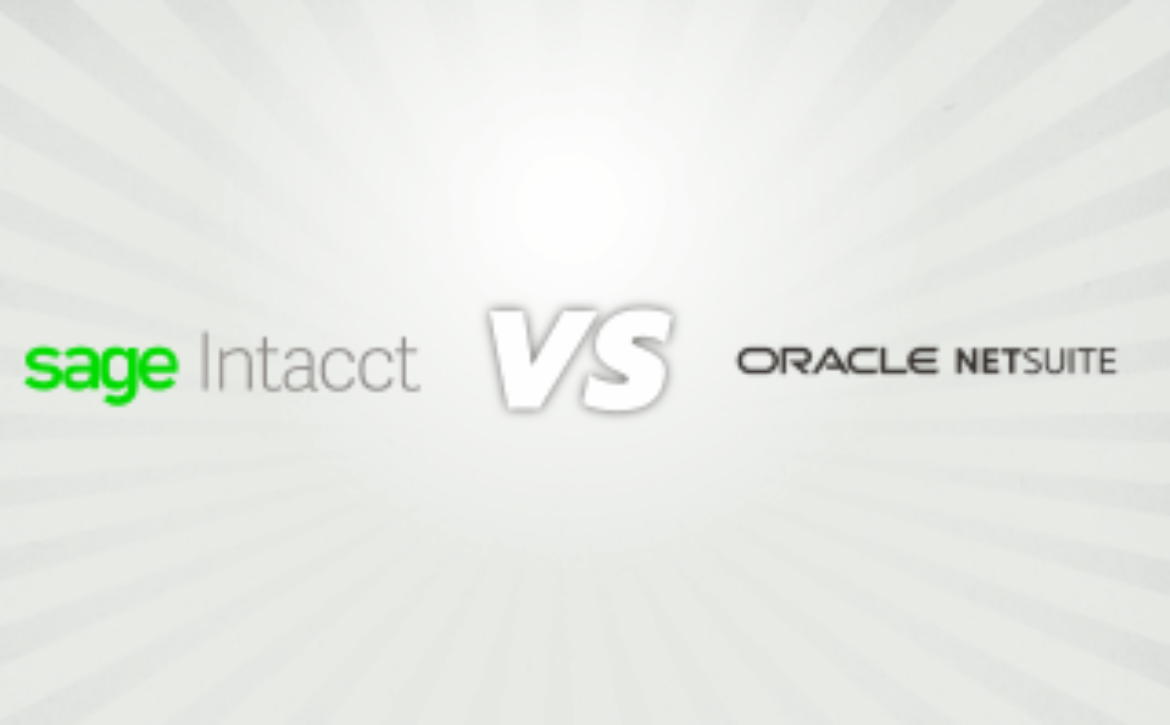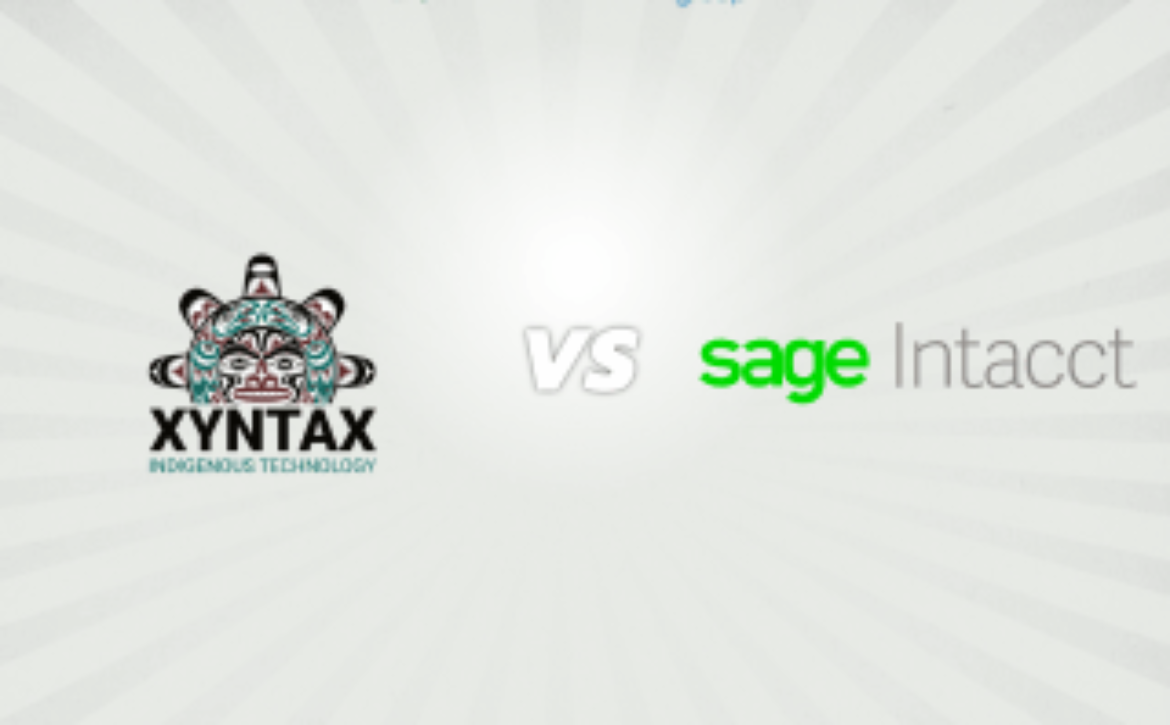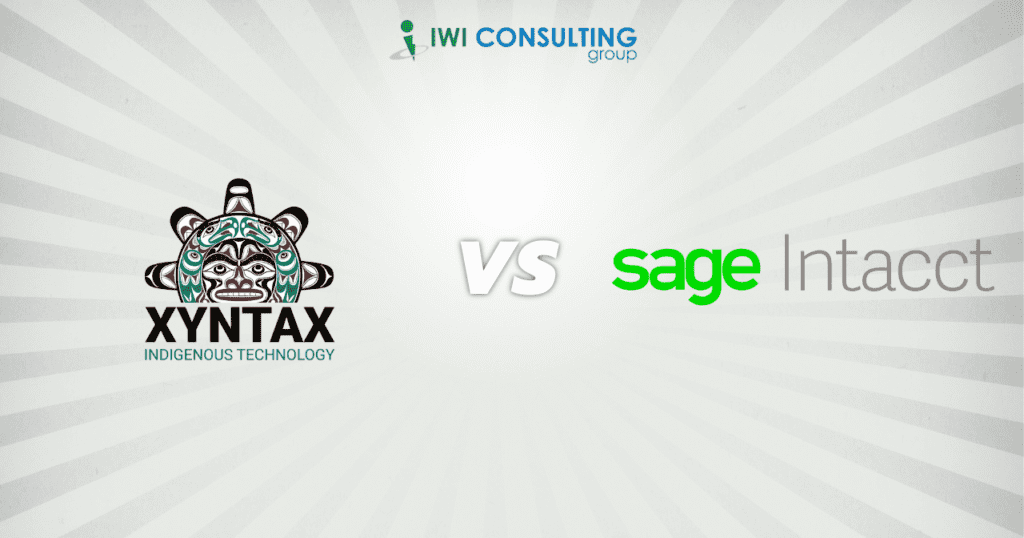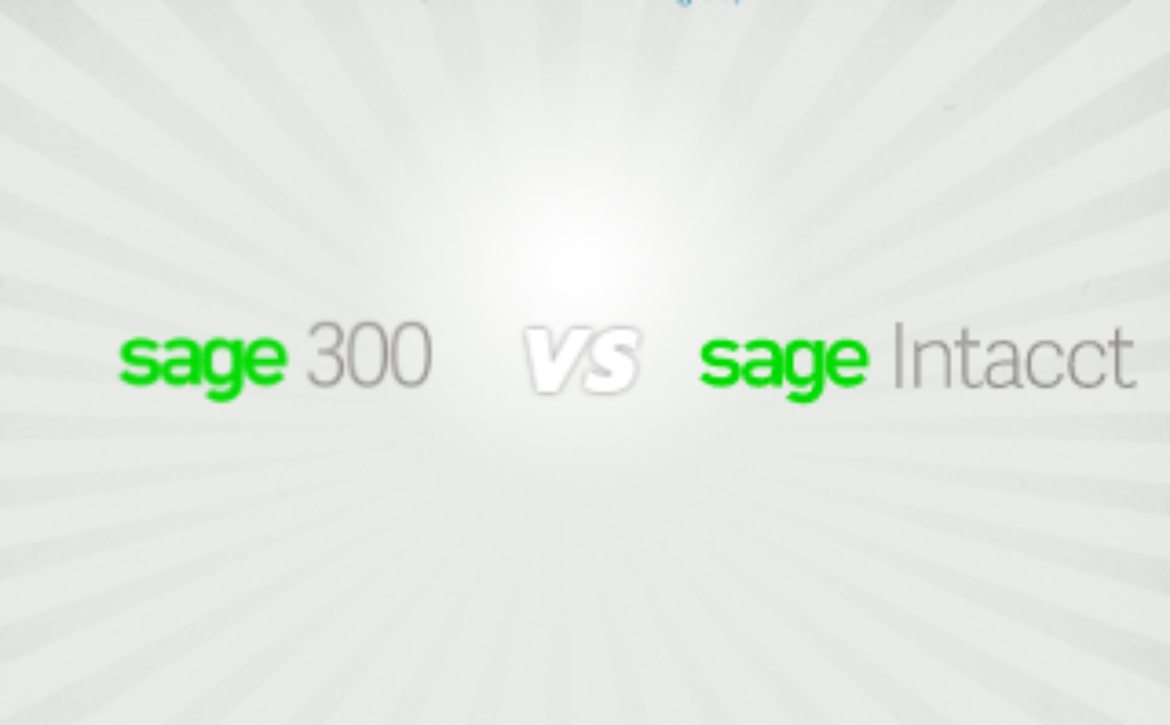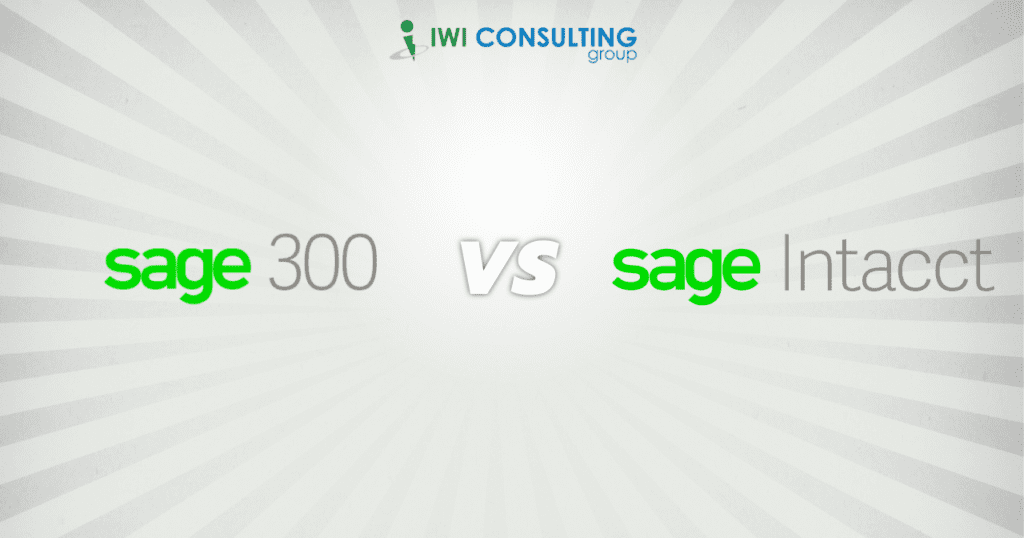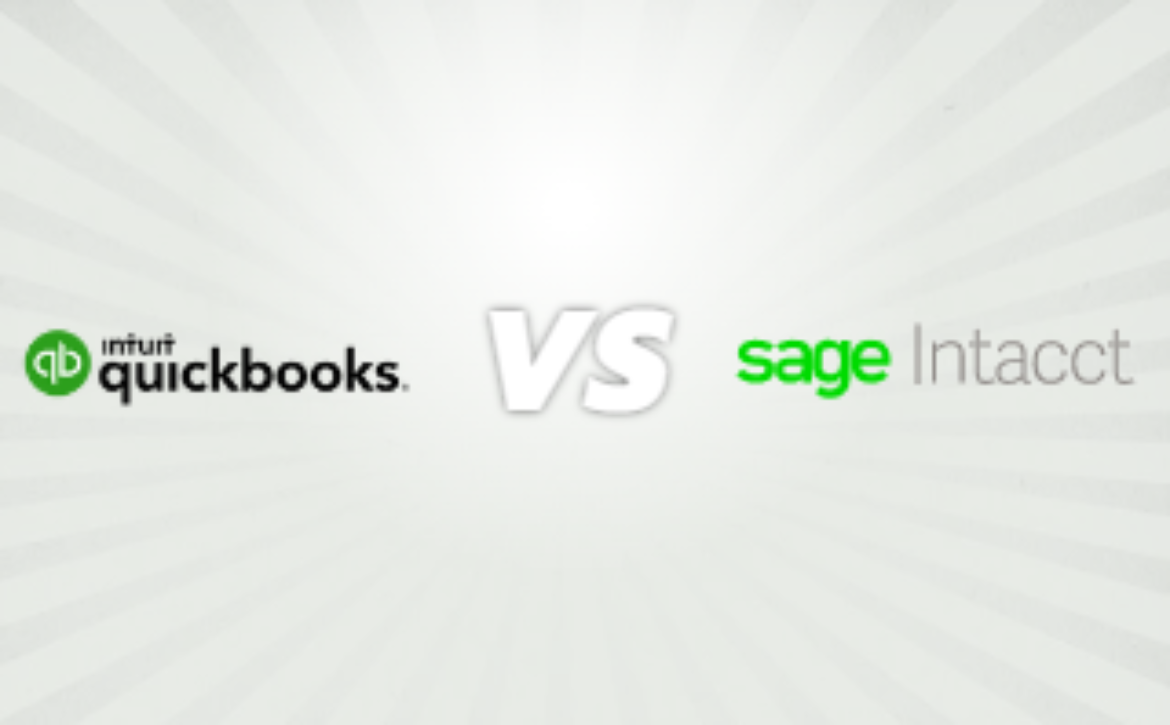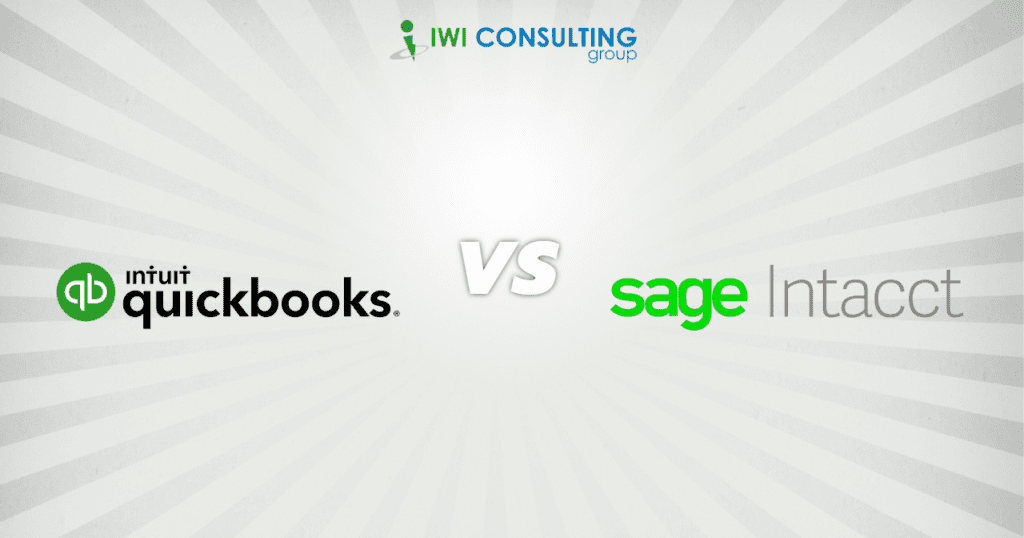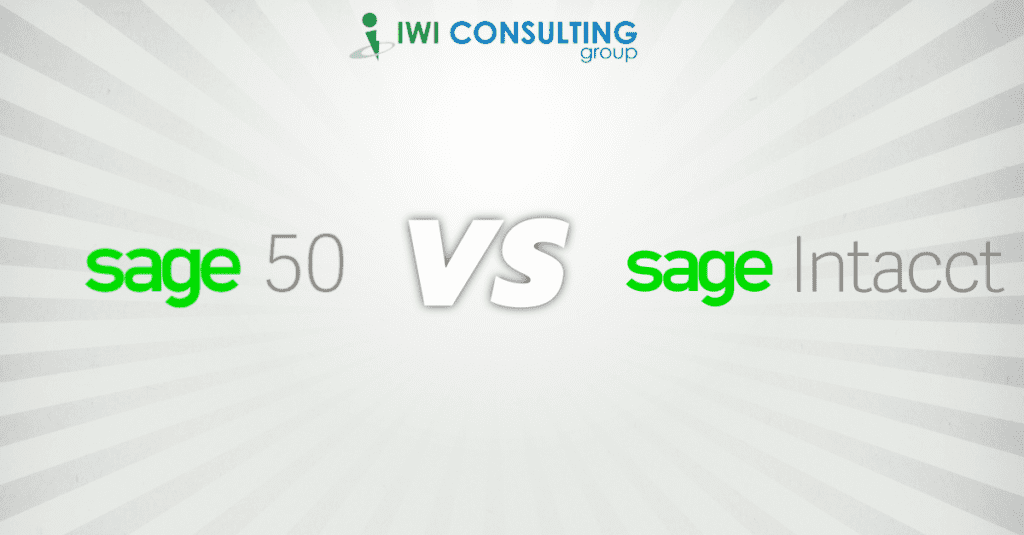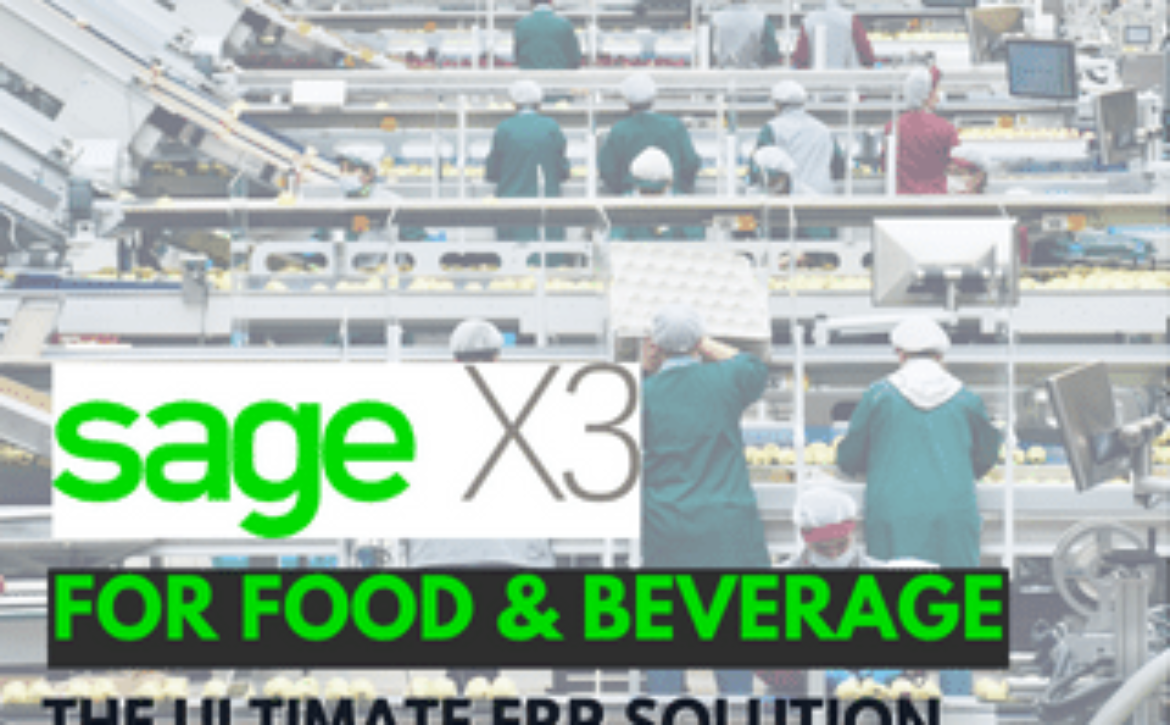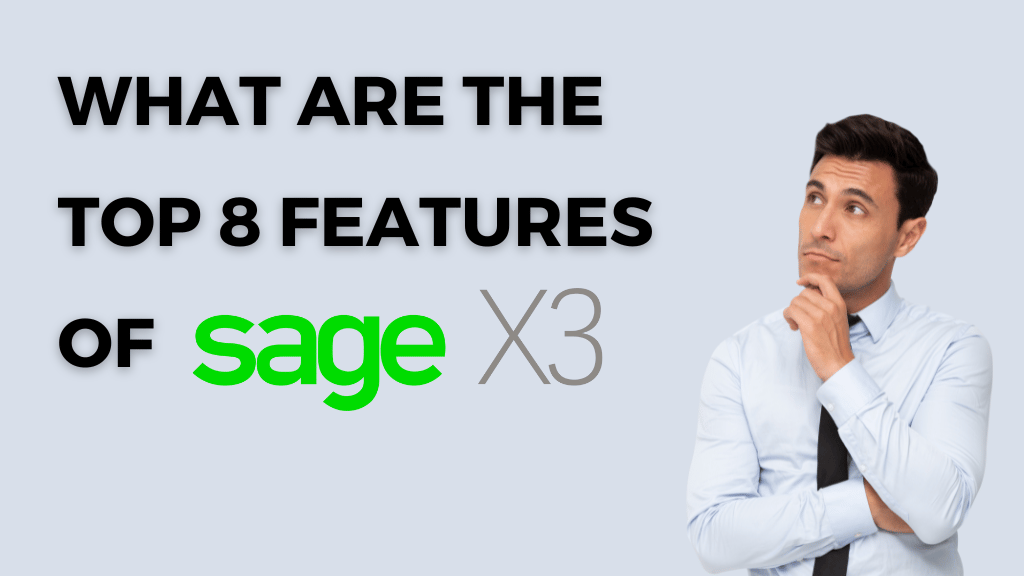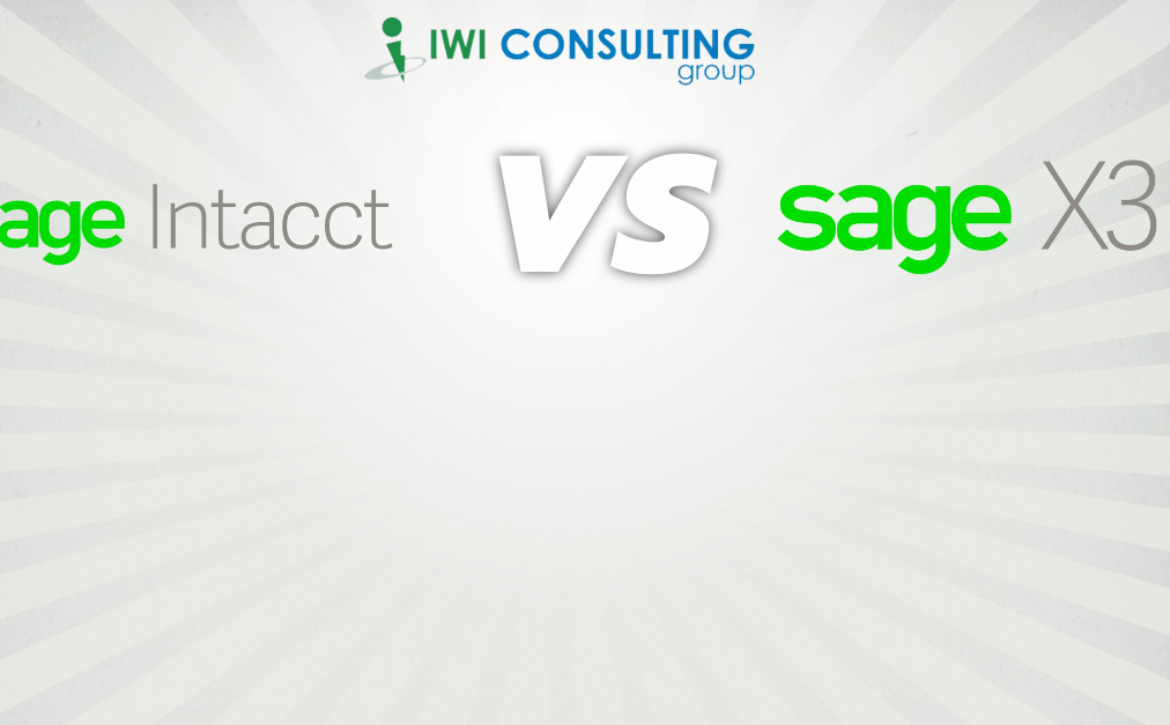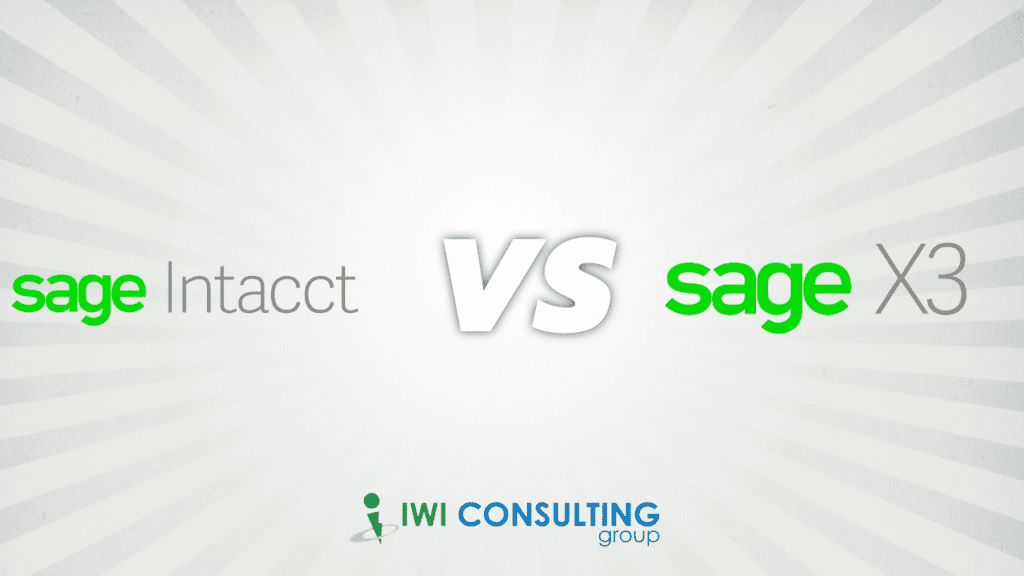Sage Intacct vs. NetSuite – Making the Right Financial Software Decision
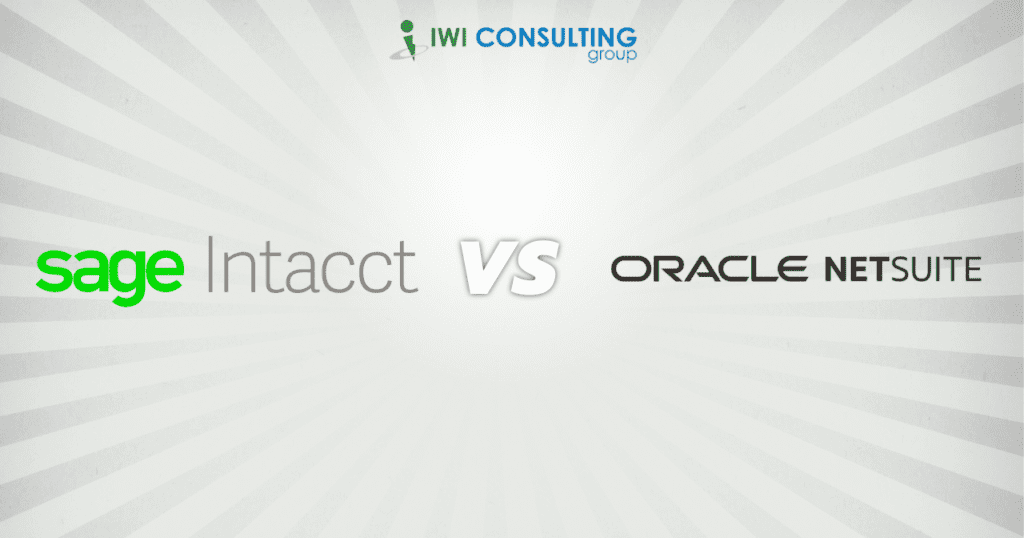
In the rapidly evolving world of financial management software, businesses seek solutions that streamline their operations and foster growth and success. NetSuite and Sage Intacct are prominent contenders, each vying for the ultimate cloud financial software title. In this in-depth comparison of Sage Intacct vs. NetSuite, we’ll delve into both platforms’ essential features, capabilities, and benefits, ultimately showcasing what software emerges as the premier choice for businesses seeking specialized financial management solutions.
Sage Intacct – Overview
Sage Intacct stands out as a dedicated cloud financial management software, purpose-built to meet the needs of various sizes and industries. Tailored to prioritize financial excellence, Sage Intacct delivers specialized accounting, reporting, and analytics capabilities, allowing businesses to optimize their financial operations precisely.
As a leading financial management solution, Sage Intacct places scalability and flexibility at the forefront. The platform’s adaptability enables businesses to grow and evolve seamlessly without the constraints of outgrowing their financial software.
One of Sage Intacct’s primary strengths is its robust reporting and analytics capabilities. The platform empowers finance teams to gain valuable insights through real-time dashboards, customizable reports, and automated financial consolidations. In addition to its economic prowess, Sage Intacct’s user-friendly design promotes efficiency within finance teams. Its intuitive interface and straightforward navigation allow users to become proficient quickly, reducing the time required for training and ensuring rapid adoption across the organization.
NetSuite – Overview
NetSuite, now known as Oracle NetSuite, is a trailblazing cloud-based Enterprise Resource Planning (ERP) platform that revolutionizes businesses’ operations. Born in the cloud, NetSuite has many business functionalities, positioning it as an all-inclusive solution designed to cater to companies of various sizes and industries.
With its unified and integrated approach, NetSuite seamlessly connects vital business processes, streamlining operations across finance, sales, marketing, human resources, inventory, supply chain, and more. This cohesive architecture fosters real-time data accessibility, enabling stakeholders to make data-driven decisions swiftly and confidently. Moreover, NetSuite’s cloud-based nature ensures that the software is continually updated, reducing the burden of manual software maintenance and allowing businesses to stay ahead of industry trends.
Key Features and Capabilities
In this section, we will delve deeper into NetSuite and Sage Intacct’s key features and capabilities, providing a comprehensive comparison to help businesses make an informed decision based on their specific needs.
Sage Intacct
While NetSuite offers various functionalities, Sage Intacct focuses on financial excellence. Sage Intacct provides targeted features that optimize financial management. Here are the key features and capabilities that make Sage Intacct a standout choice:
- Financial Reporting and Analysis: Sage Intacct’s financial reporting capabilities offer a depth of analysis critical for finance leaders. Customizable reports, multi-dimensional analysis, and real-time dashboards empower businesses to gain granular insights into their financial health.
- General Ledger and Accounting: Sage Intacct’s general ledger ensures accuracy and compliance in financial accounting. Its automated journal entries, audit trail, and robust chart of accounts enhance financial accuracy.
- Revenue Recognition: With Sage Intacct, businesses can automate complex revenue recognition processes, ensuring compliance with accounting standards.
- Project Accounting: Sage Intacct’s project accounting capabilities allow businesses to manage project financials, budgets, and profitability precisely.
- Time and Expense Management: Sage Intacct streamlines time and expense management, facilitating accurate recording and billing of employee time and project-related expenses.
- Multi-Entity and Global Consolidations: Sage Intacct simplifies financial management for multi-entity organizations by facilitating consolidated reporting across multiple locations.
- Workflow Automation: Sage Intacct’s workflow automation capabilities eliminate manual processes, reducing the risk of errors and enhancing efficiency.
NetSuite
NetSuite’s key strength lies in its holistic cloud ERP solution role. Its all-in-one approach enables businesses to consolidate various processes within a unified platform, fostering seamless data flow and real-time visibility across departments. Here are some of the key features and capabilities that set NetSuite apart:
- Financial Management: NetSuite’s financial management module covers core accounting, financial planning, budgeting, and billing.
- Customer Relationship Management (CRM): As part of its integrated suite, NetSuite offers robust CRM functionalities to manage leads, sales, marketing campaigns, and customer support.
- Inventory Management: NetSuite’s inventory management module provides real-time visibility into inventory levels, enabling businesses to optimize stock levels, reduce carrying costs, and improve fulfillment processes.
- Supply Chain Management: With NetSuite’s supply chain management capabilities, businesses can efficiently manage the end-to-end supply chain, from procurement to order fulfillment, inventory, and logistics.
- Human Resources (HR) Management: NetSuite’s HR management module streamlines HR processes, including employee records, time and attendance tracking, and payroll, facilitating effective workforce management.
- E-commerce Integration: NetSuite’s e-commerce integration empowers businesses to manage online sales, inventory, and order fulfillment seamlessly, driving growth in the digital marketplace.
- Business Intelligence and Reporting: Customizable dashboards and reports allow stakeholders to make data-driven decisions efficiently.
In the realm of cloud financial software, both NetSuite and Sage Intacct offer distinct strengths and capabilities. NetSuite’s all-in-one approach provides a holistic solution for businesses seeking a comprehensive ERP platform. On the other hand, Sage Intacct’s specialized focus on financial excellence makes it an ideal choice for companies aiming to optimize financial management.
Financial Management – Sage Intacct vs. NetSuite
Regarding financial management, Sage Intacct outshines its competitors, including NetSuite, with specialized features tailored to deliver unparalleled financial excellence. Let’s explore in detail how Sage Intacct takes the lead in this critical aspect:
Comprehensive General Ledger
Sage Intacct’s general ledger forms the foundation of its financial management capabilities. It empowers businesses to maintain accurate and detailed financial records, ensuring compliance with accounting standards and regulations. With its chart of accounts, multi-dimensional analysis, and automated journal entries, finance teams can efficiently track transactions and achieve greater financial accuracy.
Sophisticated Financial Reporting
Sage Intacct’s robust financial reporting tools offer deeper insights into financial performance. The platform allows users to create customizable financial reports, statements, and dashboards, helping finance leaders make data-driven decisions with confidence. From profit and loss statements to balance sheets, cash flow analysis, and key performance indicators (KPIs), Sage Intacct empowers businesses to stay on top of their financial health.
Efficient Accounts Payable and Receivable
Sage Intacct streamlines accounts payable and accounts receivable processes, optimizing cash flow management. The platform enables businesses to easily manage vendor bills, payments, and customer invoices, reducing manual tasks and accelerating the collections process.
Budgeting and Planning
Sage Intacct facilitates budgeting and planning, allowing businesses to create and manage budgets for different departments, projects, or periods. This feature enhances financial forecasting and ensures organizations stay on track to achieve their financial goals.
Integration – Sage Intacct vs. NetSuite
In this section, we will explore how both Sage Intacct and NetSuite excel in integration capabilities and offer customization options to meet the unique needs of businesses.
Sage Intacct
Sage Intacct showcases an impressive track record when it comes to seamless integration with a variety of third-party applications. The platform is designed to create a connected ecosystem, allowing businesses to integrate with Customer Relationship Management (CRM) systems, e-commerce platforms, payroll services, and more. This seamless integration streamlines data flow and ensures essential information is accessible across various departments in real-time.
Furthermore, Sage Intacct’s open API architecture facilitates easy integration with other software solutions. The platform encourages developers to build custom integrations, expanding its functionality to cater to unique business requirements. This flexibility enables businesses to create a tailored financial management solution that aligns precisely with their existing tech stack. With a robust set of APIs and pre-built connectors to popular business tools, Sage Intacct is a platform that seamlessly integrates with the broader software ecosystem, promoting data consistency and collaboration.
NetSuite
NetSuite takes pride in its extensive integration capabilities, boasting a vast network of partner solutions and native integrations. The Suite Cloud platform offers integration options to connect NetSuite with CRM systems, marketing automation platforms, inventory management tools, and other third-party applications.
NetSuite’s SuiteTalk API facilitates seamless integration with external systems, allowing businesses to automate data transfer and sync critical information across various applications. This integration prowess streamlines business processes, eliminates duplicate data entry, and enhances efficiency.
User-Friendly Interface – Sage Intacct vs. NetSuite
Regarding user-friendly interfaces, Sage Intacct and NetSuite offer distinct approaches, each catering to different user preferences and needs. Let’s compare their user interfaces to understand how they prioritize ease of use and efficiency:
Sage Intacct
Sage Intacct excels in delivering an intuitive and streamlined user experience. Its interface is designed with simplicity, offering a clean and organized layout that guides users seamlessly through tasks. The platform’s intuitive workflow ensures that finance teams can easily access the needed features and complete tasks.
Users appreciate Sage Intacct’s ease of navigation, as it reduces the learning curve and makes them proficient in minimal time. Personalization options allow users to customize dashboards and reports, tailoring the platform to display relevant financial data and KPIs specific to their roles.
NetSuite
NetSuite also offers a user-friendly interface with a focus on navigational efficiency. Its layout is designed to guide users through various modules and functionalities seamlessly. Users can access features quickly, enabling them to complete tasks with ease and agility.
NetSuite’s interface allows for customization, allowing users to personalize dashboards, forms, and workflows. This level of flexibility ensures that each user can tailor the platform to their unique preferences and workflow requirements.
The choice between Sage Intacct and NetSuite’s user interface comes down to user preferences, business needs, and the level of customization required. Both platforms strive to deliver user-centric solutions, ensuring that finance teams can efficiently manage financial processes and drive business success.
Scalability and Flexibility – Sage Intacct vs. NetSuite
Scalability and flexibility are critical considerations when selecting a financial management solution. Businesses need software that can adapt and grow with their evolving needs. Let’s compare how Sage Intacct and NetSuite address scalability and flexibility:
Sage Intacct
Sage Intacct is designed to cater to all sized business needs. Its architecture accommodates growth and scalability, ensuring the platform can expand alongside the organization. As businesses evolve and their financial requirements change, Sage Intacct offers the flexibility to adapt without disruptions.
The platform’s scalability allows companies to add new users, departments, or entities without compromising performance or data integrity. Whether expanding operations or entering new markets, Sage Intacct provides the tools to handle increased complexity and volume, making it an ideal choice for mid-sized businesses with growth ambitions.
NetSuite
NetSuite caters to businesses of all sizes, from small startups to large enterprises. Its scalable architecture accommodates various business requirements, allowing companies to scale operations effectively.
NetSuite’s cloud-based platform ensures businesses can easily adjust resources, such as storage and computing power, to meet changing demands. Whether experiencing rapid growth or seasonal fluctuations, NetSuite can scale up or down as needed, optimizing cost efficiency and performance.
Implementation and Support – Sage Intacct vs. NetSuite
When implementing a financial management solution, businesses seek a smooth and well-supported process to ensure successful adoption. Let’s compare the implementation and support offered by Sage Intacct and NetSuite.
Sage Intacct
Sage Intacct takes pride in its seamless implementation process, designed to minimize disruptions and ensure a swift transition to the new platform. The implementation team at Sage Intacct works closely with businesses to understand their unique requirements, tailoring the setup to align perfectly with their financial processes.
Sage Intacct’s implementation experts guide businesses through each step, from data migration to system configuration and user training. Comprehensive support during implementation ensures that users feel confident and well-prepared to utilize the platform effectively.
Moreover, Sage Intacct offers ongoing support and resources post-implementation. The customer support team is readily available to address any inquiries or concerns that may arise, providing timely resolutions to keep businesses running smoothly.
The platform’s commitment to customer success goes beyond routine support. Regular updates, enhancements, and new features ensure that businesses always have access to the latest tools and improvements. This empowers them to stay competitive and ahead of industry trends.
NetSuite
NetSuite offers a comprehensive implementation process to help businesses configure the platform for their needs. However, the scale and complexity of NetSuite’s solution may result in a longer implementation timeline for some companies, which can be a consideration for those seeking a swift implementation process.
Regarding support, NetSuite provides customer assistance through its customer support team. While the support is comprehensive, the vastness of NetSuite’s customer base can sometimes result in longer response times for specific inquiries.
NetSuite offers resources to address common questions and issues, including a knowledge base and community forums. However, the level of personalized support and attention that some businesses may require could vary due to the platform’s extensive user base.
Pricing – Sage Intacct vs. NetSuite
When it comes to pricing, Sage Intacct and NetSuite offer different approaches. Sage Intacct often provides a more transparent and cost-effective solution for businesses. Let’s compare the pricing models of both platforms.
Sage Intacct
Sage Intacct’s pricing model is known for its transparency and flexibility. This makes it an attractive choice for businesses seeking a clear understanding of their financial management costs. The platform offers subscription-based pricing, where companies pay a predictable monthly or annual fee based on factors such as the number of users, modules required, and transaction volume.
This transparent pricing approach allows businesses to budget effectively and avoid unexpected costs. Sage Intacct’s pricing scales with the organization’s size and needs, ensuring that companies only pay for the resources and functionalities they use. As a result, mid-sized businesses and growing enterprises can access a robust financial management solution while keeping their budget high.
Additionally, Sage Intacct’s implementation and support services are often included in the subscription fee, further simplifying business cost management. This all-inclusive approach provides peace of mind, knowing that implementation and ongoing support are part of the package.
NetSuite
NetSuite follows a tiered pricing model, where businesses choose from different editions based on their needs and requirements. The pricing tiers often correlate with the number of users, advanced features, and customization options. While this tiered approach provides some level of choice, it can also make it challenging to determine the precise costs without engaging in detailed negotiations with sales representatives.
NetSuite’s customization capabilities offer great flexibility but may come with additional costs. Businesses seeking extensive customizations or integrations may incur higher development and professional services fees.
Furthermore, NetSuite’s implementation costs and support services may be separate from the base subscription fee, potentially adding to the overall cost of ownership.
Security and Compliance – Sage Intacct vs. NetSuite
When it comes to security and compliance, both Sage Intacct and NetSuite prioritize safeguarding sensitive financial data. However, Sage Intacct’s specialized focus on financial management allows it to offer certain advantages in terms of security and compliance. Let’s compare the security features of both platforms.
Sage Intacct
Sage Intacct strongly emphasizes financial security, recognizing the importance of protecting sensitive financial data. As a cloud-based financial management solution, Sage Intacct utilizes top-tier data centers that employ stringent security measures, including physical access controls, firewalls, and intrusion detection systems.
The platform also adheres to industry-leading data encryption standards, ensuring that data transmitted and stored within the system remains secure. Additionally, Sage Intacct regularly conducts third-party security audits and assessments to validate its security practices and compliance with industry regulations.
Sage Intacct’s focus on financial management enables it to concentrate resources specifically on securing financial data and ensuring compliance with accounting standards and regulations such as ASC 606 and IFRS 15. This specialization enhances the platform’s ability to protect critical financial information effectively.
NetSuite
As a comprehensive business management solution, NetSuite incorporates security measures to protect various business operations aspects. The platform employs robust security features, including data encryption, multi-factor authentication, and role-based access controls.
NetSuite’s suite of applications caters to various business needs, from financial management to customer relationship management and beyond. While this diversification offers versatility, it also requires a broader approach to security to cover multiple functionalities.
The platform provides a high level of security across its diverse modules, ensuring that different aspects of a business are protected. However, the broad scope of NetSuite’s offerings may result in additional complexities in managing security settings and compliance requirements.
Conclusion – Sage Intacct vs. NetSuite
In conclusion, NetSuite and Sage Intacct offer compelling features and functionalities, yet Sage Intacct is the premier choice for specialized financial management. With its comprehensive financial reporting tools, user-friendly interface, and efficient implementation process, Sage Intacct empowers businesses to optimize their financial operations and thrive in an ever-changing business landscape. When seeking a cloud financial software that caters to the unique needs of mid-sized companies, Sage Intacct emerges as the trusted partner that fuels growth and prosperity. Selecting the ideal financial management software is a critical decision for any business. We hope this comprehensive comparison has shed light on NetSuite’s and Sage Intacct’s strengths and capabilities. We encourage you to consult our specialist team to make a perfect choice.
Why Choose IWI Consulting Group for Sage Software Solutions
The IWI Consulting Group is your trusted partner when selecting and implementing accounting software. As the largest Sage partner in Canada, we have extensive experience in assisting businesses of all sizes across various industries. Our team of experts can provide personalized guidance on choosing between NetSuite vs Sage Intacct, ensuring that you select the right solution to meet your unique requirements. We offer comprehensive training, implementation services, ongoing support, and customizations to optimize your software investment.






